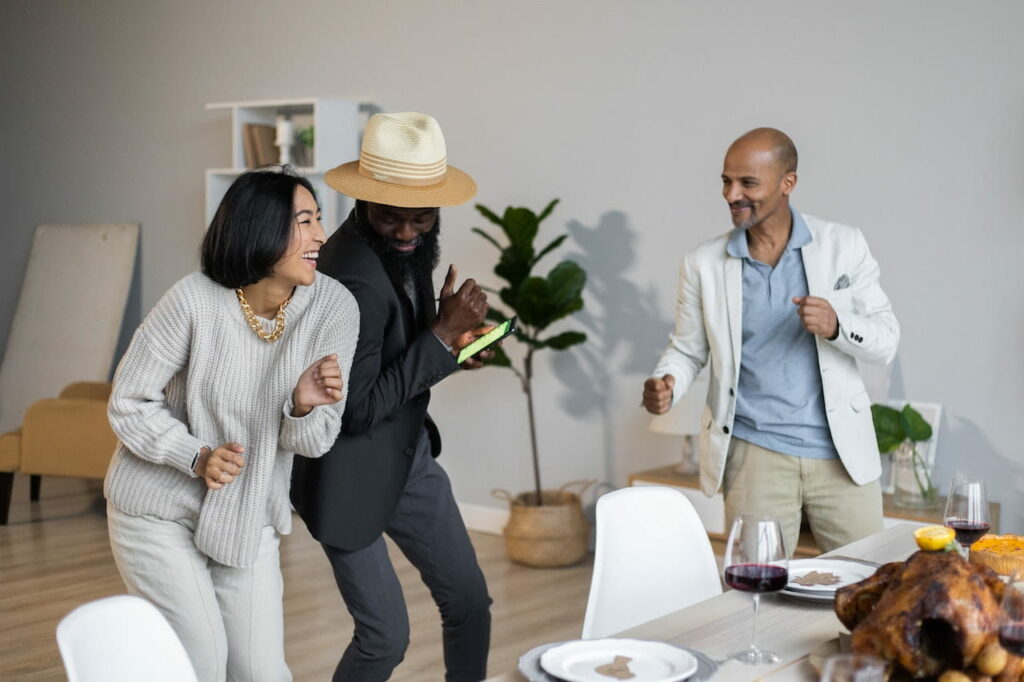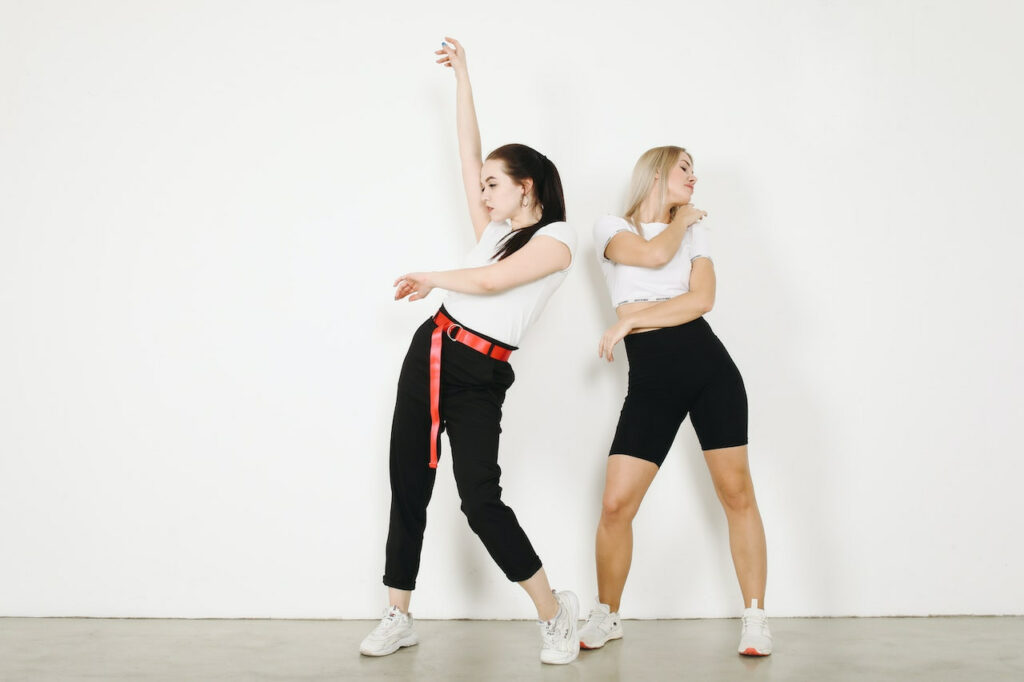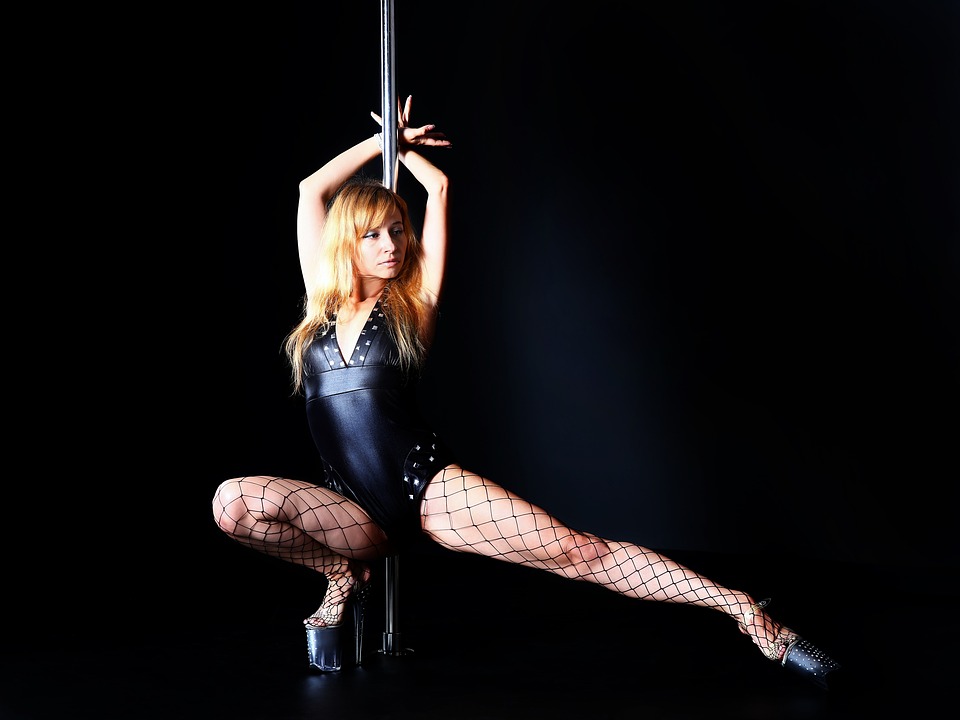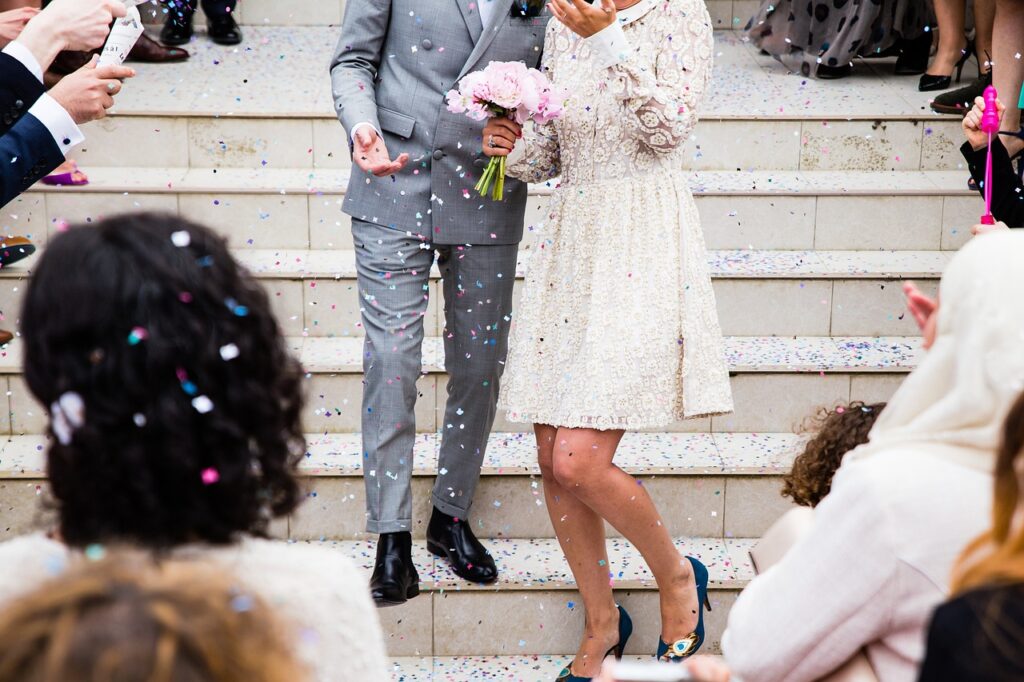
Summary
Welcome » Welcome » Exercises to improve » Tips for gaining a sense of rhythm: follow your movements
Tips for gaining a sense of rhythm: follow your movements
Are you tired of being the friend on the side who doesn't want to dance because they think they don't have the rhythm? Today we give you tips for gaining a sense of rhythm ! Because each area can be worked on and rhythm is no exception. After these tips, your body will recognize the rhythms for sure!
Summary
Tips for gaining a sense of rhythm: what causes the lack of rhythm?
On a daily basis, the sense of rhythm is called upon. Whether it's the beating of the heart, the sound of a drill or the regular intervals of children's toys. It's a universal language that brings us together and it can be frustrating not to be in phase with your classmates. But, rest assured, all is not lost! We give you all the advice to gain a sense of rhythm.
Lack of rhythm
THE pace is what allows individuals to move with grace And ease on music. But, some people do not have this ability and often find themselves at odds. However, the natural lack of rhythm is not inevitable. It can be caused by several factors.
First of all, it can be genetic or even innate. Indeed, some researchers suggest that rhythm sensitivity may be caused by family members with rhythmic skills which may lead some individuals to develop a keen sense of rhythm compared to others.
Then, a early exposure to music and movements from an early age can facilitate the development of a sense of rhythm. While those who have not been exposed to it may have more difficulty feeling and expressing rhythm.
Internal factors
Also, fear of appearing ridiculous, stress or embarrassment can to block a person to let themselves go on the track. This can create a real psychological blockage that prevents connection with the rhythm.
Another factor that can play a role is lack of concentration. Indeed, dance and rhythm in general require special attention to follow the rhythm. As a result, people with difficulty concentrating can easily get out of step with the rhythm.
Finally, the difficulty synchronizing the body with the music due à des problèmes de coordination peut créer un décalage entre le rythme et le jeu de jambes/mouvements de bras.

Rhythmic deafness
There rhythmic deafness is a condition that affects a person's ability to perceive and interpret rhythmic patterns in music. It is also known as rhythmic amusia. This is the case where a person experiences dDifficulty recognizing, feeling and reproducing rhythmic patterns in music. Unlike traditional deafness, that is to say, the perception of sound frequencies, rhythmic deafness is specific to the perception of time and musical rhythm.
The causes
Furthermore, there are several explanations on this condition.
Neurological factors
The first concerns the neurological factors. Moreover, it is one of the most studied avenues. Indeed, research has shown thatThere are some differences in the structure and function of the brain in people affected by rhythmic hearing loss. Specific regions of the brain are affected, including the auditory cortex and the areas related to rhythm processing, can be altered.
Also, the complex neural connections involved in perception as well as processing can be disturbed, which can lead to difficulty interpreting rhythmic sequences in music. Indeed, the brain processes that deal with synchronization movement with music can be unbalanced, which explains the coordination difficulties in some people affected by rhythmic hearing loss.
Heredity
THE genetic factors can also play a role. Indeed, studies show that some families may be more prone to this condition, suggesting a possible faulty genetic component. Genetic variations could influence how the brain processes and interprets rhythmic patterns in music.
Related cognitive disorders
Rhythmic hearing loss may be associated with other cognitive disorders. In particular, dyslexia or autism spectrum disorders. Indeed, the latter share similarities in the brain processes linked to perception and understanding.
The impacts
Rhythmic deafness has significant impacts on aspects of life and has profound repercussions on the musical culture of those affected.
Musical difficulties
The direct impact of rhythmic hearing loss is that sufferers often have difficulty reproducing and distinguishing rhythms in music. What may seem natural to many, such as playing an instrument, singing or dancing to the rhythm, can be real challenges for those affected by this condition.
Social communication
Music is a universal language. Additionally, some social interactions may revolve around music. However, for those affected by the condition, it can be exclusionary. Then, concerts or dance evenings can make them feel isolated, because they cannot fully enjoy the musical experience.
Self-esteem and confidence
The impacts are also psychological. Indeed, they have difficulty feeling the rhythm and can develop a lowered self-esteem and an flow confidence in their musical and dancing abilities.
Coordination and movement
Rhythm and coordination often go hand in hand. Thus, people with rhythmic hearing loss may experience difficulty coordinating their movements with music. This can result in difficulty dancing, performing synchronized movements and following the rhythm.
The solutions
There are solutions and strategies to improve the musical experience of people experiencing rhythm deafness.
Musical education
To start a adapted music education can play a crucial role in the management of deafness. Indeed, having a Personalized learning can help with understanding rhythm through exercises and practice sessions. Additionally, teaching music theory and rhythm reading techniques can strengthen the connection between movements and music.
Using Metronomes
THE metronomes are the tools that produce a regular beat, this accessory can be beneficial for people with rhythmic hearing loss. Indeed, its use during a musical moment could allow them toanchor the sense of rhythm and maintain a constant pace.
Adapted dance classes
Dance and music are intrinsically linked. So a specialized dance classes allows us to offer a environment favorable to the exploration of movement in rhythm with music. This can help develop rhythmic coordination.
Auditory and cognitive therapy
Some of these therapies may be beneficial for improve rhythmic perception. Also, auditory rehabilitation programs can help consolidate the neural connections associated with rhythm perception. But you can also head towards the dance therapy.
Understand rhythmic concepts
The music is based on different elements that overlap to create captivating melodies and rhythms. But a central element prevails, the rhythm. He is the one who brings the music to life. But rhythm does not come alone, it is accompanied by notions that we will explore shortly.
First of all, what is musical rhythm? It's a precise temporal structure to music. Its role is to define the organization of sounds and silences over time, creating a pulse that guides the musical experience. Moreover, rhythm is what allows music to progress and generate momentum as well as create emotions.
Notions
There are 5 notions of rhythm which are as follows:
- The weather : This is the basis of musical rhythm. It consists of equal units called measures. Each measure contains a certain number of beats. For example, “4/4” means 4 beats per measure.
- Beats : A beat designates the regular pulse which separates each measure in equal times.
- The emphasis : We are talking here about rhythmic accents highlighting certain beats over others. Thus, accents create distinct patterns and contrasts, contributing to musical texture.
- The subdivision : This is the fact that each beat can be divided into minimal parts, therefore subdivisions.
- The rhythmic pattern : Rhythmic patterns are repeated sequences of sounds and silences. This is what gives rhythmic melodies which become characteristic elements of a musical composition or a score.
How to improve?
To get the sense of rhythm in your skin to dance with ease or simply appreciate music on a deeper level and cultivate your sense of rhythm, here are some tips for gaining a sense of rhythm.
Active listening
Active listening is an engaged and conscious listening technique where the listener immerses all his attention in the music. This technique promotes the sense of rhythm for several reasons:
- Distinguishing rhythm patterns
- Immerse yourself in accents and tempos
- Follow the structure
- Internalize the rhythm
How to practice it? By following these instructions :
- Listen without distractions
- Focus on the rhythm
- Mark the measurement by clapping your hands
- Identify recurring rhythmic sequences
- Vary the musical styles
Practice with a metronome
The metronome is an essential tool for developing a sense of rhythm since it provides a solid foundation for learning and mastering rhythmic patterns.
In addition, the metronome has several benefits :
- Improved rhythmic precision
- Strengthening synchronization
- Development of concentration
- Learning the subdivision
- Development of muscle memory
- Exploration of varied tempos
To practice the metronome, focus on strong beats and rhythmic accents. Next, use subdivision to develop your precision in complex rhythms by dividing beats into small groups. Then continue with other musical styles.
To dance
Nothing better than dancing to develop your sense of rhythm! Indeed, it is bodily expression that naturally responds to the rhythmic pulsations of music. The body lets itself be carried by the rhythm of the latter. This is what allows you to refine your sense of rhythm thanks to its different virtues:
- Feel the rhythm in the body
- Strengthening coordination
- Integration of rhythmic accents
- Exploring Subdivisions
- Development of personal expression
To dance in good conditions, follow these tips:
- Choose your favorite music
- Start with simple movements
- Observe rhythmic details
- Experiment with different musical styles
- Dance spontaneously
- Sing your favorite song
Practice subdivision
To perfect your sense of rhythm, you can explore percussive instruments such as drums, bongos or even djembes for their rhythmic pulsations. They present several profits :
- Physical connection with rhythm
- Rhythmic learning of rhythm patterns
- Development of coordination
How to experiment with percussive instruments to gain a sense of rhythm, follow these instructions:
- Start with simple instruments
- Learn basic rhythms
- Play with other musicians
If percussion doesn't tempt you, you can always go for the guitar for example.

To conclude
Let's go back to the essential advice for gaining a sense of rhythm. Firstly, we saw that the lack of rhythm could be of natural cause or because of rhythmic deafness.
Next, we looked at the condition of rhythmic hearing loss. In the first place the causes :
- Neurological factors
- Heredity
- Related cognitive disorders
Then, the impacts :
- Musical difficulties
- Social communication
- Lower self-esteem
- Coordination and movement difficulties
Finally, we saw the solutions possible:
- Musical education
- Using metronome
- Adapted dance classes
- Auditory and cognitive therapy
Concepts and advice
Continuing this momentum, we have seen the rhythmic concepts which are as follows:
- The weather
- Beats
- The emphasis
- The subdivision
- The rhythmic pattern
Finally, we have given you advice to improve yourself:
- Active listening
- Practice with a metronome
- To dance
- Practice subdivision
Gain a sense of rhythm with DECIBEL®
We told you that the best way to gain a sense of rhythm was to dance, right? So, now is the time to enjoy a session at DECIBEL® . Dance as much as you can to 45 minute intensive workout sessions all in strengthening your cardio and muscles.
Practice on choreographies tailor-made to ambiance you. Don't hesitate any longer, become a dance professional by drawing your abs, glutes and thighs with coaches ready to do anything to make you sweat under dim lighting.
Spend time at DECIBEL ®.
Read also
follow us
on instagram
Follow our news,
take advantage of our tutorials and participate to our
contests!
BREAKING NEWS!
Receive our newsletter.






